You don’t need to be up-to-date with industry trends to appreciate this fundamental truth: weather can make or break a construction project. Site safety often depends on keeping dry, maintaining mobility, and ensuring optimum comfort in all conditions. With weather patterns becoming increasingly unpredictable, rain gear designed specifically for the construction industry is not luxury but rather a pressing necessity.
In 2023, we can anticipate revolutionary developments in weather protection technology and design. The trends will address not only the functional requirements of rainwear like waterproofing and breathability but also environmental climatic conditions, ergonomic concerns, durability, and safety visibility. Rainwear in construction is not merely an add-on safety measure, but a vital, potentially life-saving tool in the builder's kit.
The aim of this article is to explore the game-changing trends in rain gear for the construction field, their market impacts, and potential value to the consumer. Let's dive head-first into these insights, and uncover a future where not even the heaviest downpours can halt productivity in the construction field.
Global Rainwear Market Overview
The market for rainwear products worldwide has not only been consistent but has also fascinated us with its evolving nature. From trending fashion adjustments to innovative materials with improved design, the rainwear market caters to all conceivable customer whims and practical needs. The global sphere of this industry has progressively ascended on the market ladder, expected to be defined as a USD 6.4 billion empire by 2032. From seasoned adventurers to city dwellers, the umbrella of rainwear consumers continues to grow broader each day! That's one rain cloud we're okay with.
Market Size
When you step into the vibrant and ever-growing world of rainwear, the numbers speak louder than words. With a predicted market size of USD 6.4 billion by 2032, rainwear has transformed itself from a simple 'rain shield' to an industry giant. And mind you, this didn't happen overnight. It's the result of gradual innovation and an unwavering commitment to customer satisfaction. The secret sauce to this revenue boost? It all boils down to the individual buyer and their demands for quality, durability, and design. But the value the consumer finds in rainwear is just half of the story.
Growth Forecast
Have you ever imagined the near future? A scenario where your everyday commute or any outdoor adventure seems incomplete without the right rainwear to shield you from unpredictable weather? It might be closer than you think. Analysts predict a growth forecast with a compounded annual growth rate (CAGR) of 5.4% during the projection period. The rapidly changing climate, consumer trends shifting towards increased preference for outdoor activities, and constant product innovation are driving the growth forward.
The exciting projections for the rainwear market demonstrate not just the strength and potential of this market, but also its dynamic and adaptable nature. One can't help but be awed by the way this industry is taking the world by storm, perfectly geared up for all the challenges the weather (and market trends!) can throw at them.
Rainwear in the Construction Industry
Whether it's a downpour or a light drizzle, working outside amidst unpredictable weather can be a challenge for construction workers. The most reliable antidote? High-performing rainwear. Hard-wearing, waterproof gear is essential not just for comfort, but safety too. This paves the way to explore the undeniably critical role of rainwear in the construction industry.
Role in Market Growth
The construction industry plays a significant role in driving the growth of the rainwear market. Construction workers are braving the elements day in day out, and their need for durable, resilient rainwear is non-negotiable. With numerous construction sites operating round the clock, in a variety of climates and weather conditions, it's no wonder the demand for rainwear is always high. This consistent requirement for high-performance rain gear puts the construction industry in the spotlight as a key contributor to market growth.
From heavy-duty raincoats to waterproof boots, the range of rainwear products required on a construction site is diverse. Each of these high-quality products must meet strict standards, demonstrating how the construction industry not only contributes to the volume of rainwear sales, but it also influences product development and innovation. For quality rain gear recommendations tailor-made for construction workers, Rain Gear Recommendations For Construction offers valuable tips and trusted advice.
Potential Impact of Construction Starts Decline
Significant changes in the construction industry can have a ripple effect on the rainwear market. For instance, a forecast for construction starts in 2024 indicates a potential 6% decline. Although this figure might look small in isolation, its knock-on effect on the demand for rain gear in the construction industry could be substantial. As the number of construction site starts slows, there may be fewer workers on sites, and consequently, a diminished demand for rain gear.
While this is a potential concern, the ever-evolving nature of the construction industry, coupled with occasional weather extremes, ensures that the need for reliable rainwear remains. Despite potential fluctuations, the array of conditions construction workers face guarantees an ongoing demand for rainwear. In fact, rain or shine, the construction industry continues to be instrumental in holding up the rainwear market and promoting product innovation.
In the construction industry, rainwear packages practicality, safety, and comfort into a protective layer of reassurance against the unpredictability of the weather, reminding us again of its pivotal role in the market growth. Even as construction starts might wane, the construction industry remains a resilient pillar supporting the demands and progress of the rainwear market.
Emerging Trends in Rainwear
The fashion world never stays stagnant, as it continuously evolves, innovates, and adapts to consumer needs, climate changes, and technological advancements. This holds especially true for rainwear—a specific segment of the industry that has seen massive changes in recent years, substantially elevating the game beyond traditional waterproof jackets and umbrellas. Let's explore four exciting emerging trends in rainwear that are currently shaping the market.
Smart Textiles and Intelligent Features
In line with the global trend toward smart technology, rainwear is undergoing a transformation. The integration of smart textiles and intelligent features into rain jackets is a prominent trend that has piqued the interest of consumers worldwide. Imagine wearing a raincoat that can change color according to temperature, adjust its breathability in response to external humidity, or even charge your phone! Sounds unreal? Well, the future of rainwear might surprise you.
Lighter, More Breathable and Packable Jackets
No longer must you lug around a heavy raincoat. The industry has shifted gears towards the production of lighter, more breathable, and packable jackets. These advancements have been brought about without compromising the core function of rainwear—ensuring water resistance. Customers are particularly impressed with the new lightweight designs which allow for more effortless movement without sacrificing rain-proofing capabilities.
Durable Water Repellent (DWR) Technology
A great leap in fabric technology is the adoption of Durable Water Repellent (DWR) coatings. This innovation has revolutionized the market offering new levels of waterproofing to consumers. DWR technology provides added protection by causing water to bead up and roll off the fabric, enhancing the garment's water-resistant properties.
Enhanced Visibility Rain Gear
Perhaps one of the most critical advancements in rainwear pertains to safety rather than style or comfort. Enhanced visibility rain gear aims to improve the safety of workers who must perform tasks in adverse weather conditions. These garments often feature reflective elements, expanding visibility in low-light and visibility situations, greatly increasing safety and preventing accidents.
Innovation, technology, and safety are at the heart of these emerging trends in rainwear. From smart textiles to DWR coatings, the rainwear industry is continually evolving, promising a future where staying dry might just be the least impressive thing your raincoat can do.
Impact of Outdoor Activities on Rain Gear Market
The connection between the revival of outdoor activities and the booming rain gear market is as fascinating as it is significant. As more people delve into outdoor pursuits such as hiking and camping, the demand for quality rain gear continues to surge. We see a shift towards advanced, high-performance apparel that can withstand the harshest of weather conditions, signalling a promising future for the rain gear market.
Outdoor Apparel Market Growth
The global outdoor apparel market generates considerable interest among industry stakeholders and observers due to its robust growth. Incredible as it may sound, recent studies anticipate the outdoor apparel market will register a Compound Annual Growth Rate (CAGR) of over 6.6% between 2024 and 2032. This projection highlights an upward trajectory that underscores the zeal with which outdoor enthusiasts are embracing the need for suitable gear.
- Notably, this trend isn't limited to specific geographic locations or demographics.
- From weekend mountaineers in the Alps to trail runners in the Rockies, outdoor enthusiasts worldwide are recognizing the benefits of high-quality outdoor gear.
- More specifically, the demand for rain jackets and coats has seen exponential growth.
Effect of Outdoor Leisure and Hiking Trend
This surge in demand can be attributed, in large part, to the escalating popularity of outdoor leisure and hiking. Around the globe, more individuals are exploring the wonders of nature, sparking an increased need for rainwear jackets and coats. As a result, well-established brands and emerging players in the rain gear market are pushed to innovate and offer products that aren't just weather-resistant but also comfortable, stylish, and versatile.
This rise in outdoor activities is a testament to our evolving lifestyle trends. People are no longer content staying within the confines of their homes. They are embracing the thrill of exploration, the tranquility of nature, and the challenge of physical activities - all of which require the right gear.
Driven by these developments, the rain gear market is poised to scale new heights. Therefore, manufacturers, industry stakeholders, and investors should closely monitor these market dynamics to capitalize on the opportunities they present. The future of rainwear hinges on the thrill and passion for exploration, stretching the limits of where we go, what we do when we get there, and how we dress for the occasion.
Quality and Durability Factors
When it comes to choosing gear for outdoor wear, certain factors typically determine its quality and durability. These factors heavily influence the user experience and satisfaction they derive from the products they purchase. Three significant factors include the use of high-performance fabrics, seam-sealed construction, and waterproof breathable membranes.
High-performance Fabrics
High-performance fabrics often bring innovation and durability to the table. They infuse usability, protection, and comfort into the clothing, ultimately making them long-lasting. Engineered for a range of weather conditions, these fabrics brave harsh outdoor elements and maintain warmth and dryness. They resist wear and tear, ensuring the product serves you for extended periods.
Seam-sealed Construction
Seam-sealed construction, another critical factor, elevates the resistance of your clothing item to water ingress. It involves treating the seams and stitching in the garments with a waterproof adhesive, creating a wall against the onslaught of water or precipitation. Additionally, this construction boosts the item's durability, reducing the potential for rips, tears, and fraying over time.
Waterproof Breathable Membranes
Finally, waterproof breathable membranes drastically enhance the quality of outdoor wear. These membranes employ advanced technology to strike the perfect balance between waterproofing and breathability. This ensures you stay dry from both external moisture and internal perspiration, providing a comfortable experience throughout.
Understanding these factors can guide you when purchasing gear suitable for your outdoor activities and work, ensuring you get the best value for your money. If you're a construction worker, for instance, understanding the role of these factors can prove beneficial when choosing from a list of the Top 10 Durable Rain Jackets for Construction workers. Armed with this information, you can make an informed decision and experience the combination of comfort, protection, and durability in your outdoor gear.
Conclusion
As we gaze ahead into 2023, now, more than ever, the role of rain gear in various fields is rapidly changing. With advances in fabric technology and design, rainwear continues to evolve, increasing both quality and capacity. Whether it's improving work performance in industries like construction, or enhancing experiences in outdoor leisure and hiking activities, the upgraded features of rain gear are becoming an indispensable part of our weather-prepared lifestyle.
Hurricane Raingear, a trailblazer in this domain, consistently offers superior, 100% waterproof and rip-resistant products, highlighting the connection between innovation, comfort, and practical design. In a rapidly expanding market, the brand remains committed to delivering exceptional customer service, providing rain gear solutions that prioritize protection, visibility, and unrestricted movement.
The future of rain gear is bright, with continual innovations sure to emerge as we step into 2023 and beyond. Embrace these advancements, and gear up with confidence for any weather eventuality, keeping in mind that premium quality and durability matter in the long run. With Hurricane Raingear, staying dry and comfortable is not just a promise, but a guarantee. Stay safe, and be weather-ready.
Frequently Asked Questions
-
What are some game-changing rain gear trends in the construction field for 2023?
Some game-changing rain gear trends in the construction field for 2023 include: 1. Lightweight and breathable materials, 2. Increased use of waterproof and moisture-wicking fabrics, 3. Advanced insulation and layering options, 4. Enhanced visibility features, and 5. Integration of smart technology.
-
Why is lightweight and breathable rain gear important in the construction field?
Lightweight and breathable rain gear is important in the construction field as it allows workers to move freely and work comfortably, while also preventing overheating and excessive sweating. It improves overall productivity and reduces the risk of heat-related illnesses.
-
What are the advantages of using waterproof and moisture-wicking fabrics in rain gear?
Waterproof and moisture-wicking fabrics are advantageous in rain gear as they keep construction workers dry by repelling water and allowing sweat to evaporate. This helps maintain a comfortable body temperature and prevents the build-up of moisture, reducing the risk of discomfort and skin irritations.
-
How can advanced insulation and layering options in rain gear benefit construction workers?
Advanced insulation and layering options in rain gear provide added warmth and protection against cold and harsh weather conditions. They allow construction workers to adjust their clothing layers based on the temperature, ensuring comfort and preventing the risk of hypothermia or frostbite.
-
What are smart technologies being integrated into rain gear for construction workers?
Smart technologies being integrated into rain gear for construction workers include features like built-in GPS tracking, activity monitoring, and communication capabilities. These technologies enhance safety and enable real-time monitoring of workers' location and well-being, improving overall job site management and emergency response.



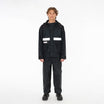



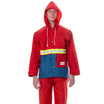


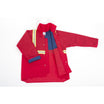

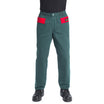



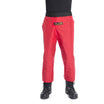






Leave a comment
This site is protected by hCaptcha and the hCaptcha Privacy Policy and Terms of Service apply.